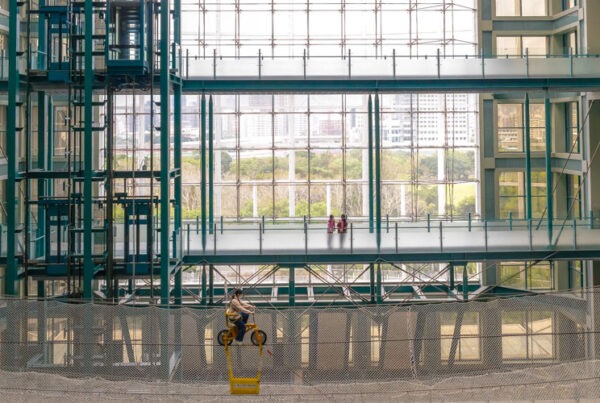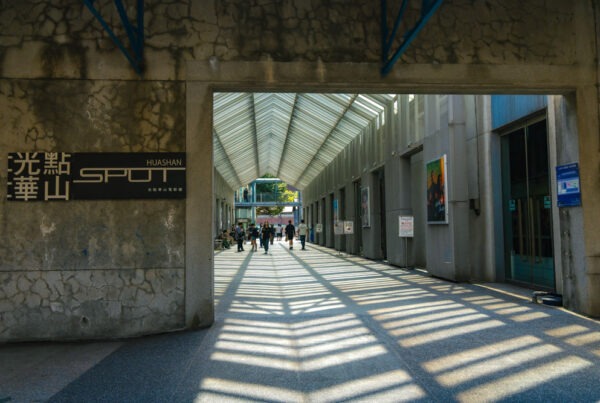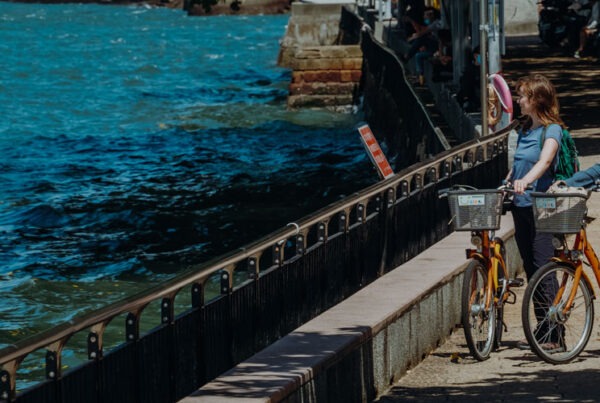Cycling, Railway Travel, and High-Mountain Exploring
TEXT / RICK CHARETTE
PHOTOS / VISION
Nantou County feels quite different from all other counties in Taiwan. When visiting the island’s sole landlocked county, your sense is that you’ve entered a hidden-away mountain bastion, accessed via gaps between high peaks on the north, east, and south sides, lower on the west through which most visitors enter. You feel an immediate sense of discovery and adventure after arriving. The tourist-adventure possibilities in this article follow three themes–cycling at beguiling mountain-surrounded Sun Moon Lake, railway travel on the scenic Jiji Line, and high-mountain exploring at lofty-perch Qingjing Farm and Hehuanshan (Mt. Hehuan).
Tour 1 – Cycling
Sun Moon Lake
Located close to Taiwan’s geographical center and about 750m above sea level, Sun Moon Lake (www.sunmoonlake.gov.tw), is one of the island’s most iconic scenic attractions. The renowned round-lake biking route, about 30km in length, often makes lists of the world’s most scenic bicycling destinations – the CNN Travel website has described it as one of the world’s top 10 “cycling routes that’ll take your breath away.”

You can cycle much of the lake’s west side right beside the emerald-green waters – sometimes seemingly flying along overhead – on a long (14km) dedicated bikeway. The full lake circumnavigation is accomplished by using the round-lake highway on the hilly east side, which involves some climbing; the highway has low motor-vehicle speed limits. There’s one long dedicated bike-path section along this length. Numerous bike-rental operations vetted by the Tourism Administration are found along the route – at the Xiangshan Visitor Center and the two tourism-focused villages on the lake’s north and south shores, Shuishe and Ita Thao.
The lake’s scenic focal points include Lalu Island, visible from many vantage points along the west and north sides. This is sacred ground for the area’s native people, the Thao, who had a key village here before waters were raised last century as part of a major hydroelectricity project. Regular yacht-tour cruises launched from the Shuishe and Ita Thao piers circle the island in-close. Other west-side bikeway high points include the dynamic-design Xiangshan Visitor Center, which has an info-rich exhibit hall and fine glass-façade café overlooking a tranquil bay, and the nearby poetically comely Tongxin Bridge and Yongjie Bridge, known as the “wedding photo bridges.” There’s also the Xiangshan Scenic Outlook skywalk, reached via a branch boardwalk that seems to flow through treetops, high above the aforementioned bay.





Major sights fronting the lake’s east side are the magisterial, decoratively extravagant Wenwu Temple and the Sun Moon Lake Ropeway (www.ropeway.com.tw), which lifts you up to high-gliding big vistas on the way to popular Formosan Aboriginal Culture Village (www.nine.com.tw), located in a valley not far from the lake



Tour 2 – Railway Travel
Jiji Line
The short multiple-carriage trains (some colorfully painted) that ply the scenic 29.7km Jiji Line operate like buses on a convenient local route, delivering tourists and locals between old settlements along the Zhuoshui River from the edge of the western plains to the foot of the mighty central mountains below Sun Moon Lake. Tourists use the frequent service for relaxed and inexpensive hop on/hop off expeditions through the river valley. The branch line, which runs between the towns of Ershui and Checheng, was created by the Japanese colonial government in the 1920s to transport materials for Taiwan’s first great hydroelectricity-generation project, encompassing up-mountain Sun Moon Lake and valley-bottom Checheng.

The massive hydro-facility works at Checheng are a wonder to behold, especially the suite of giant side-by-side pipes descending the mountainside at the village’s edge. Checheng also had a long period as a major logging center, and right in the village is the highly informative Checheng Wood Museum, a renovated timber-processing complex, where you can view an old timber mill, lake-sized timber storage pond, and numerous other logging-era wood-built structures.


Just outside the town of Shuili is the tourist-focused Shuili Snake Kiln (www.snakekiln.com.tw), a sprawling heritage facility perched on a hillside hidden by forest cover. In bygone days Nantou was a flourishing ceramics-production center. The compound’s facilities encompass the original kiln and a museum area, multimedia exhibition room, boutique, and breezy open-front coffee shop.

In Jiji Township, visit the quaint, cottage-ish Japanese-style Jiji Railway Station, a reproduction created after severe damage to the original in Taiwan’s infamous 921 Earthquake, and the mesmerically photogenic ruins of the original Jiji Wuchang Temple, which collapsed in on itself. Rent bicycles near the train station and head out along the sun-dappled Jiji Green Tunnel, a vivaciously green 4.5km tree-lined section of County Route 152, motor-vehicle traffic generally light, which has good spots to rest and take photos of passing trains.



Tour 3 – High Mountains
Qingjing Farm/Hehuanshan
Qingjing Farm (www.cingjing.gov.tw) and Hehuanshan are exceptionally popular alpine tourist destinations located on the Highway 14A section of the Central Cross-Island Highway. Though high and deep in the central mountains, both are easily reached thanks to Taiwan’s first-rate highway system. If self-driving, Qingjing is just 3.5hrs or so from Taipei, 1.5hrs from central Taichung. Among your varied bus options, perhaps most convenient is the Taiwan Tour Bus (taiwantourbus.com.tw) guided-tour service, vetted by the Tourism Administration, which offers a Qingjing/Hehuanshan outing.
Qingjing, at an altitude of about 1,750m above sea level, is one of Taiwan’s most visited recreational farms. The area’s unique quartet of enticements are wondrous mountain panoramas, alpine-farmland experiences, dramatically perched slope-hugging inns and homestays, and a vibrant Baiyi community. The farm was settled in the early 1960s by retired Nationalist soldiers who had been stationed in China’s Yunnan region after the Chinese Civil War; many had married women from the local Baiyi and other minority tribal groups. Taiwan’s highest-elevation skywalk, the gently curvaceous Qingjing Skywalk, flows uphill along steep pastureland slopes for 1.2km. At the Green Green Grassland, sheep and (sometimes) cattle graze on rolling mountaintop pastureland, and there are daily sheep-shearing/sheep-dog shows and horse-riding shows.



Wuling, Taiwan’s highest public-road point at 3,275m and gateway to Mt. Hehuan’s various peaks via easy-access roadside trailheads, is about an hour’s drive from the farm. Since the highway puts you just below the vertexes, the hike to the main peak requires only moderate fitness. The Hehuanshan Main Peak Trail, 1.8km one way, brings you to the 3,417m-altitude pinnacle, where you’ll enjoy grand panoramic views. Along the way you’ll see abandoned military facilities (until 2000 this was an off-limits zone) such as a barracks camp and camouflaged pillboxes.


About the author

Rick Charette
A Canadian, Rick has been resident in Taiwan almost continually since 1988. His book, article, and other writings, on Asian and North American destinations and subjects—encompassing travel, culture, history, business/economics—have been published widely overseas and in Taiwan. He has worked with National Geographic, Michelin, APA Insight Guides, and other Western groups internationally, and with many local publishers and central/city/county government bodies in Taiwan. Rick also handles a wide range of editorial and translation (from Mandarin Chinese) projects.












